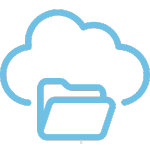In an era where cyber threats are increasingly sophisticated, protecting sensitive business information has become a top priority for organizations, especially small and medium-sized enterprises (SMEs). Email is a primary communication tool, but it also serves as a significant attack vector for cybercriminals. Corporate email solutions incorporate various security features designed to safeguard sensitive data, maintain compliance, and protect the integrity of business communications. This essay explores how these security features work together to protect sensitive business information.
Key Security Features and Their Protective Mechanisms
- Encryption:
Encryption is a fundamental security feature that ensures that email content is only accessible to intended recipients. Corporate email solutions typically utilize Transport Layer Security (TLS) for encrypting emails in transit and may offer end-to-end encryption for emails at rest. This means that even if an email is intercepted during transmission, its content remains unreadable to unauthorized parties. By implementing encryption, businesses can protect sensitive information such as financial data, personal identification details, and confidential communications from prying eyes. - Two-Factor Authentication (2FA):
Two-factor authentication adds an extra layer of security by requiring users to provide two forms of verification before accessing their email accounts. This could include a password and a temporary code sent to the user’s mobile device. Even if a cybercriminal obtains a user’s password through phishing or other means, they would still need the second factor to gain access. This significantly reduces the risk of unauthorized access to sensitive information stored in email accounts. - Spam and Phishing Filters:
Advanced spam and phishing filters are essential for identifying and blocking malicious emails before they reach users’ inboxes. These filters analyze incoming messages for suspicious characteristics, such as known phishing tactics or harmful attachments. By preventing phishing emails from being delivered, businesses can reduce the likelihood of employees falling victim to scams that could compromise sensitive data. - Data Loss Prevention (DLP):
Data Loss Prevention tools monitor outgoing emails for sensitive information and enforce policies to prevent accidental or intentional data leaks. For example, if an employee attempts to send an email containing credit card information or personal identification numbers, the DLP system can block the message or alert the user about the potential breach of policy. This proactive approach helps maintain compliance with data protection regulations and safeguards customer information. - Secure Email Gateways:
Secure email gateways provide an additional layer of protection by filtering both incoming and outgoing emails for threats such as malware and ransomware. These gateways analyze email traffic in real-time, detecting potential risks before they reach users or are sent out from the organization. By blocking harmful content, secure email gateways help prevent data breaches and protect sensitive business information. - Email Archiving:
Email archiving solutions ensure that all email communications are stored securely and can be retrieved easily when needed. This feature is crucial for compliance with regulations that require businesses to retain certain communications for specified periods. Archiving also protects against accidental deletion of important emails, ensuring that sensitive information remains accessible when required. - User Training and Awareness Programs:
Many corporate email solutions include training resources aimed at educating employees about best practices for email security. By fostering a culture of awareness around phishing attempts and safe email practices, businesses can significantly reduce human error—the leading cause of security breaches. Regular training helps employees recognize suspicious emails and avoid falling victim to scams. - Audit Trails:
Audit trails provide a record of all email activities, including sent and received messages, logins, and changes made to accounts. This feature is essential for monitoring compliance with internal policies and external regulations, as well as investigating any suspicious activities that may indicate a breach. - Integration with Other Security Tools:
Corporate email solutions often integrate seamlessly with other cybersecurity tools such as firewalls, antivirus software, and intrusion detection systems. This holistic approach ensures that all aspects of a business’s IT infrastructure work together to provide comprehensive protection against threats.
Conclusion
In conclusion, corporate email solutions offer a robust set of security features designed to protect sensitive business information from cyber threats. Through encryption, two-factor authentication, spam filters, data loss prevention tools, secure email gateways, archiving capabilities, user training programs, audit trails, and integration with other security measures, these solutions create a multi-layered defense against potential risks. As small businesses increasingly rely on email for daily operations, investing in secure corporate email solutions is essential for safeguarding communications, maintaining customer trust, and ensuring compliance with regulatory requirements in today’s digital landscape.









